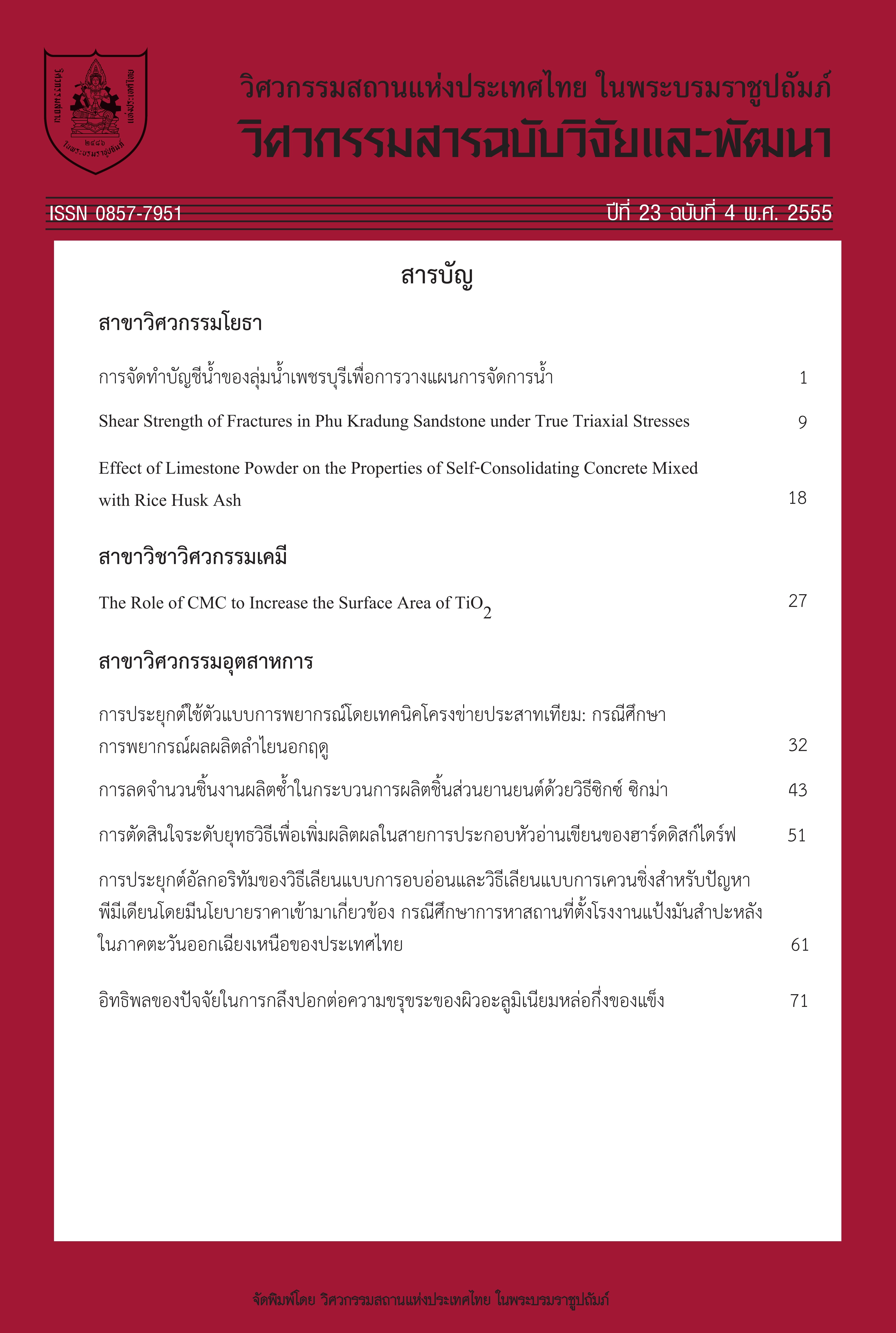การลดจำนวนชิ้นงานผลิตซ้ำในกระบวนการผลิตชิ้นส่วนยานยนต์ด้วยวิธีซิกซ์ ซิกม่า
Main Article Content
Abstract
Abstract
Objective of this research is to reduce a number of reworks in Slip Joint manufacturing process to less than 30 percent. From current situation, the Slip Joint manufacturing process produces more than 80 percent of reworks. Researchers apply Six Sigma problem-solving techniques, including Cause and Effect Diagram, Failure Mode and Effect Analysis, and Design of Experiments, to indicate critical factors affecting reworks and indicate optimal values of each of these factors. Results from this research indicate that there are three most significant factors, consisting of 1) Nib Diameter of Tube Shaft, 2) Class Level, and 3) Tool Life and optimal values of these factors are 1) -0.008 mm., 2) Maximum value, and 3) 0-50 pieces, respectively. Results from confirmation experiments show that the Slip Joint manufacturing process can produce 12.15 and 21.48 percent average of reworks when using 0-200 pieces and 201-400 pieces of tool life, respectively.
Article Details
The published articles are copyright of the Engineering Journal of Research and Development, The Engineering Institute of Thailand Under H.M. The King's Patronage (EIT).


